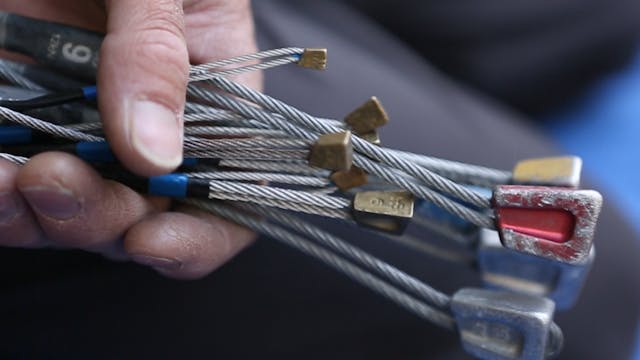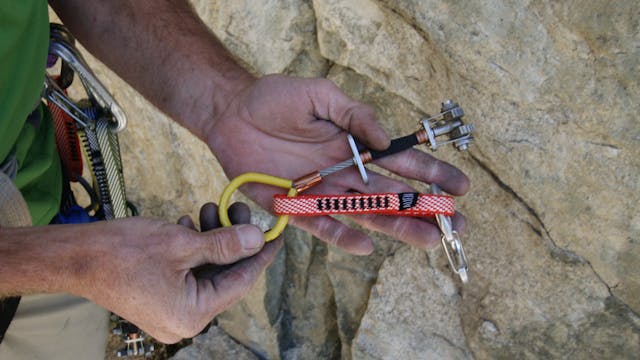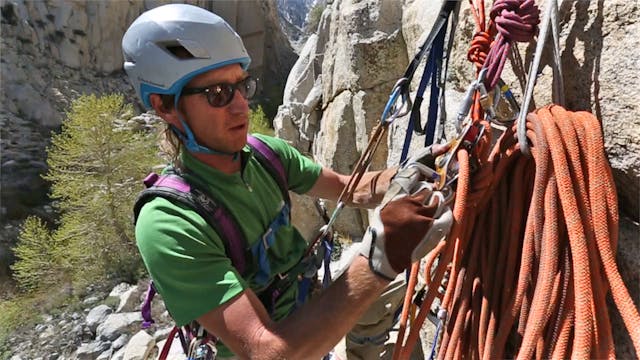Aid Climbing: 17. Lead Ropes & Haul Lines
Aid Climbing & Big Walls
•
1m 30s
In this video we continue our discussion of the gear necessary for aid and big wall climbing.
- Dynamic Lead Line - 60 meters is standard, but some routes may require 70 meter rope. Check the topo or ask other climbers for beta.
- Static Line or Dynamic Line - Used for hauling. A static line stretches less and is more efficient for hauling—but a second dynamic line can serve as a backup lead line if you get a core shot or otherwise damage your primary lead line. This is a matter of personal preference for most climbers.
- Haul Bag - Typically 1 large haul bag per climber depending on the climb. Smaller haul bags may be appropriate for shorter walls, or a mix of one large bag and one small. Again, many options, but keep it as simple and lightweight as possible!
We hope you found this video helpful. Feel free to comment below with questions or thoughts!
Please remember, climbing is inherently dangerous. Climb at your own risk.
Up Next in Aid Climbing & Big Walls
-
Aid Climbing: 19. Offset Placements -...
On aid climbs and big walls, offset nuts are an indispensable tool that turn otherwise unprotectable seams or incipient cracks into a reasonable climb. In this video, we look at the benefits of offset nuts, and the pros and cons of softer metals used in some sets.
Offset nuts, unlike standard ...
-
Aid Climbing: 18. Offset Placements -...
A set of offset cams can be an essential part of your aid climbing rack. They have two lobes of one size cam, and two lobes of the next size up or down (i.e. larger or smaller). Offset Cams allow you to place a solid cam in a flared crack, which is impossible with a traditional cam. In this video...
-
Aid Climbing: 20. Partner Communication
In this video we review additional commands, specific to partner communication while aid and big wall climbing.
Aiding Command #1: When the lead climber reaches the anchor, builds a bomber (i.e. 100% secure) anchor, and fixes the main rope, they will yell down to the belayer, “Line is fixed!”...


